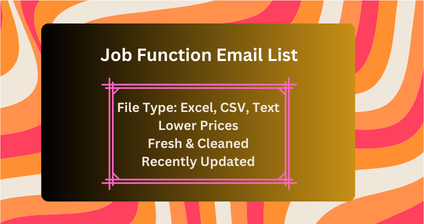Post by shafik87 on Jan 8, 2024 14:08:08 GMT 7
Understanding the users search intent ensures that based on their intent. Your websites bounce rate will increase if a user searches for information but displays a product page even though your website ranks high for that keyword. Vice versa if you don't know about it or if people want to buy the product do n't stupidly optimize long articles for top rankings. Take them to your category product page. Differentiate keyword types. Currently, there are various types of keywords and make good use of your type of keywords, short keywords, fat head, and other key words to search on the page.
The search volume is typically very high, the competition is very fierce, and the difficulty is very high. Short keyword examples: Men's shoes search engine optimization. I think it is a good service. Long tail keywords. These keywords usually have more competition than individual words. Low and easy to carry out in a short time. Example of Job Function Email List long tail keywords : hunter blue men's shoes are cheap. I don't know about it or the price of the website service. Now there is a question. With these two types of keywords, which keyword will you choose? There will definitely not be an accurate answer. It depends on what type of keywords you use and what you use for your purposes. While running a long page for a client.

Typical post -project advice from the Times suggests that if you want to rank for a specific article and want to get high conversion rates, you should focus on long-tail style business keywords. If you are a large enterprise with a long-term strategy and want to rank your website for major keywords without knowing it or you need to focus on brand keywords or fat head information. Before jumping into each step of keyword research take a moment to review the two charts below. Your guide to keyword research and making good use of it Above is a statistical chart of page statistics from the world's leading websites.



 )
)
